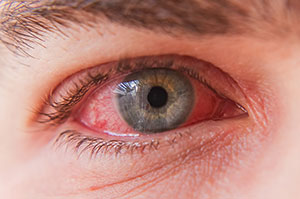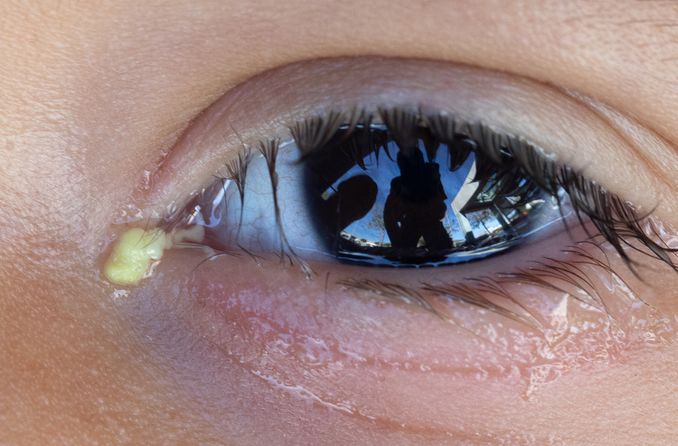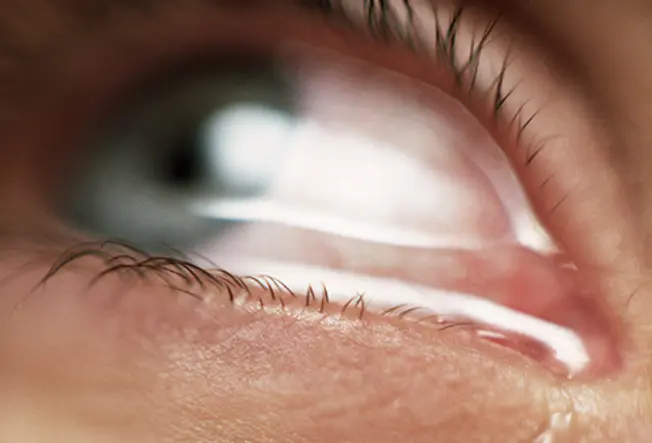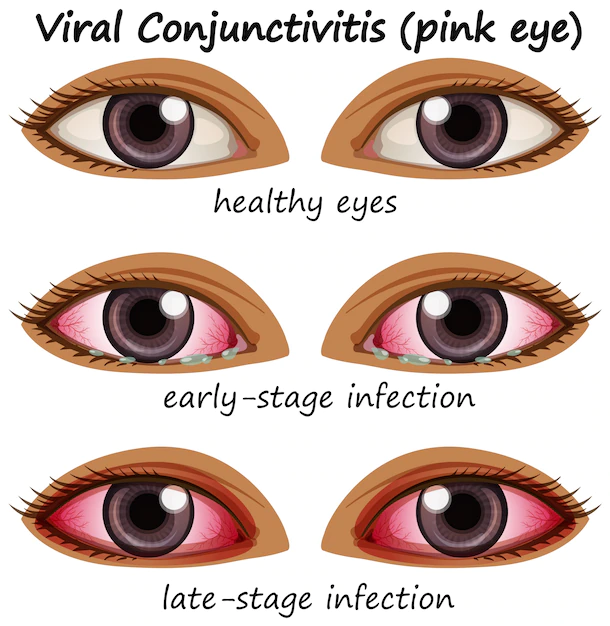Symptoms of Eye Flu: Understanding the Common Signs and How to Deal with Them
Meta Description: Learn about the symptoms of pink eye and how to identify this common eye condition. Discover effective ways to manage pink eye and prevent its spread.
Introduction
Pink eye, also known as conjunctivitis, is a widespread eye condition that affects people of all ages. It can be caused by various factors, including bacterial or viral infections, allergies, or irritants. Identifying the symptoms of pink eye is crucial for timely intervention and preventing its spread to others. In this comprehensive article, we will delve into the various signs of pink eye and offer insights based on both expertise and personal experiences.
Symptoms of Eye Flu
Pink eye presents several noticeable symptoms, and it’s essential to recognize them to seek appropriate treatment promptly. Now, we will delve into each of these symptoms and examine them closely.
1. Red Eyes

One of the hallmark signs of pink eye is the reddening of the whites of the eyes. The blood vessels in the conjunctiva become inflamed, causing the eyes to appear pink or red.
2. Eye Discharge

Individuals with pink eye may experience a discharge from their eyes, which can be of various colors depending on the cause of the infection. In bacterial conjunctivitis, the discharge is often thick and yellow or green, while viral conjunctivitis may produce a clear, watery discharge.
3. Itchy Sensation

Pink eye can lead to an intense itching sensation in the affected eye, causing discomfort and the urge to rub the eyes frequently. However, rubbing the eyes can exacerbate the condition and spread the infection.
4. Tearing

Excessive tearing, also known as epiphora, is another common symptom of pink eye. This occurs due to the irritation caused by the inflamed conjunctiva.
5. Swollen Eyelids

Inflammation of the conjunctiva can lead to swollen eyelids, making it challenging to open and close the eyes comfortably.
6. Sensitivity to Light
People who have pink eye might feel sensitive to light, which is called photophobia. Exposure to bright lights can worsen eye discomfort and pain.
7. Crusting of Eyelids
When pink eye is caused by bacteria, the discharge can dry and crust on the eyelids, particularly after sleep.
8. Blurry Vision
In severe cases of pink eye, patients may notice blurred vision. This symptom warrants immediate medical attention.
9. Foreign Body Sensation
People with pink eye may feel as if there is a foreign object or particle in their eyes, contributing to the discomfort and urge to rub the eyes.
10. Increased Tear Production
While tearing is a common symptom of pink eye, some individuals may experience excessive tear production, leading to a constant watery discharge.
11. Eyelash Loss
In rare cases of severe and prolonged pink eye, eyelash loss may occur due to the inflammation and irritation of the eyelash follicles.
12. Pink Eye in Babies
Babies can also develop pink eye, and their symptoms may include excessive tearing, eye discharge, and difficulty opening their eyes.
How to Deal with Pink Eye: Effective Management and Treatment
Dealing with pink eye involves a combination of self-care measures and medical treatment, depending on the underlying cause. Let’s explore some effective ways to manage pink eye:
1. Practice Good Hygiene
Frequent handwashing can help prevent the spread of pink eye, especially in cases of viral or bacterial conjunctivitis. Avoid touching or rubbing your eyes, as this can exacerbate the condition and contribute to the transmission of the infection.
2. Use Warm Compresses
You can find relief from discomfort and reduce swelling in your eyes by applying warm compresses. Gently press a clean, warm washcloth against closed eyelids for a few minutes several times a day.
3. Artificial Tears
Over-the-counter artificial tear drops can help soothe the eyes and alleviate dryness and irritation associated with pink eye.
4. Avoid Contact Lenses
If you wear contact lenses and develop pink eye, it’s best to switch to glasses until the infection clears up. Contact lens wear can exacerbate the condition and slow down the healing process.
5. Antihistamines and Decongestants
For allergic conjunctivitis, over-the-counter antihistamine eye drops or oral antihistamines can provide relief from itching and other allergy symptoms. Decongestant eye drops can also help reduce redness and swelling.
6. Prescription Medication
In cases of severe or persistent pink eye, a healthcare professional may prescribe antibiotics (for bacterial conjunctivitis) or antiviral medications (for viral conjunctivitis) to speed up recovery.
FAQs about Pink Eye
- What is the incubation period for pink eye?
The incubation period for viral conjunctivitis is typically between 24 hours to 14 days after exposure to the virus. Bacterial conjunctivitis may have a shorter incubation period of 1 to 3 days.
- Can I wear makeup if I have pink eye?
It is best to avoid wearing makeup while you have pink eye, as it can further irritate the eyes and slow down the healing process.
- Which age group is more prone to getting pink eye – children or adults?
Pink eye can occur in people of all ages, but it is more common in young children due to their close proximity to one another in school or daycare settings.
- Can I go to work with pink eye?
If you have pink eye, it’s best to stay home from work or school until your symptoms improve or as advised by a healthcare professional.
- I’m wondering about the length of time it takes for pink eye to go away.
The length of time that pink eye lasts is determined by the underlying cause. Viral conjunctivitis may last up to two weeks, while bacterial conjunctivitis can improve within a few days with proper treatment.
- Can I prevent pink eye?
While you cannot prevent all cases of pink eye, practicing good hygiene, avoiding close contact with infected individuals, and not sharing personal items can reduce the risk of transmission.
Conclusion
Pink eye is a common eye condition that can be caused by various factors, including viral and bacterial infections, allergies, or irritants. Identifying the symptoms of pink eye is crucial for seeking timely treatment and preventing its spread to others. By practicing good hygiene, using warm compresses, and seeking appropriate medical treatment when necessary, individuals can effectively manage pink eye and facilitate a faster recovery. Remember, if you suspect you have pink eye or any other eye condition, it is best to consult a healthcare professional for a proper diagnosis and treatment plan.

